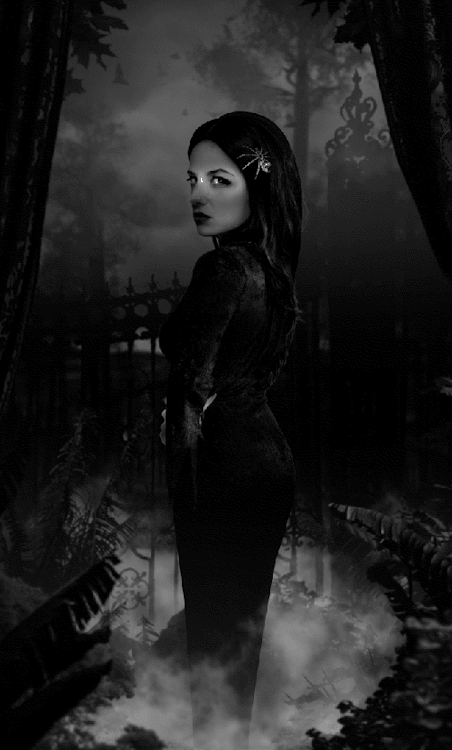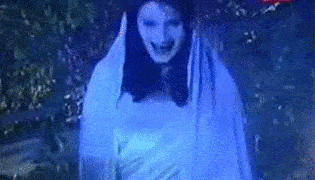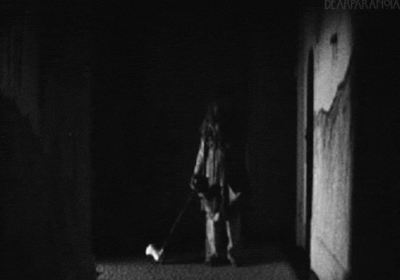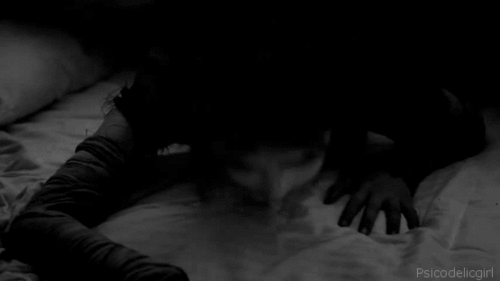
HILMANBASRI.COM

Asian urban legends comprise a rich and diverse tapestry of folklore, horror stories, and supernatural tales that have been passed down through generations across the vast continent. These legends often draw upon cultural, historical, and societal elements unique to the region. From vengeful spirits like the Onryo in Japan to the shape-shifting Pontianak in Malaysia, or the haunted Aokigahara Forest in Japan, these tales capture the essence of Asian storytelling, blending elements of fear, morality, and mysticism to create a captivating tapestry of urban myths that continue to intrigue and terrify audiences both within Asia and around the world. These stories often reflect the values, fears, and traditions of their respective cultures, contributing to the rich tapestry of Asia's supernatural narrative tradition.
The Orang Bunian


The Orang Bunian is a term used in Malay and Indonesian folklore to describe a mystical, hidden race of forest-dwelling beings. These supernatural creatures are deeply rooted in the beliefs and legends of the Malay archipelago. Here is an explanation of the Orang Bunian:
1. Nature and Characteristics:
Orang Bunian, also known as "Bunian People" or "Hidden People," are believed to reside in the dense jungles and remote parts of the rainforests in Malaysia and Indonesia. They are often portrayed as small, ethereal beings with a shimmering, otherworldly appearance, possessing the ability to blend seamlessly with their forest surroundings. Their skin is said to have a greenish hue, and they are known for their captivating, almost hypnotic beauty.
2. Mystical Abilities:
Orang Bunian are believed to possess extraordinary magical powers. These powers often involve their ability to heal or communicate with the animals and plants of the forest. They are said to live in harmony with nature, acting as protectors and custodians of the rainforest, and are capable of invoking spells or creating illusions to protect their hidden world.
3. Hidden and Elusive:
The Orang Bunian are known for their elusive nature. They are rarely seen by humans and are said to have the ability to make themselves invisible, which allows them to remain hidden from those who may come too close to their territory. Some legends suggest that they prefer to emerge during specific times, such as twilight or full moon nights.
4. Interactions with Humans:
In Malay and Indonesian folklore, encounters with the Orang Bunian are often portrayed as both enchanting and perilous. These beings are known to be friendly, especially to those who show respect for the natural world. However, humans who disrupt the forest or show disrespect to nature may incur their wrath. Legends tell of individuals who, after encountering the Orang Bunian, gain unique insights or receive magical gifts.
5. Cultural Significance:
The belief in the Orang Bunian has played a significant role in the cultural and environmental awareness of the region. It has served as a cautionary tale to encourage people to respect and protect the forests and the environment, as well as to maintain harmony with the natural world.
6. Modern Interpretations:
While the belief in the Orang Bunian has waned in more urbanized areas, it continues to hold a special place in the hearts and minds of those living in close proximity to the rainforests. In recent years, there has been a resurgence of interest in these folkloric beings, with some cultural events and art forms celebrating their significance in the region's history and traditions.
The Orang Bunian, like many folklore creatures, represent the deep connection between the people of the Malay archipelago and their natural surroundings. They are a testament to the rich tapestry of beliefs and legends that continue to shape the cultural identity of the region.
Pontianak

The Pontianak is a malevolent spirit deeply ingrained in the folklore of Southeast Asia, particularly in countries like Malaysia and Indonesia. This vengeful ghost, known by different names such as Kuntilanak in Indonesia, is believed to be the restless soul of a woman who died during childbirth or while pregnant.
The Pontianak is a chilling figure, often portrayed as a woman dressed in white, with long, disheveled hair and sharp nails. Her distinctive feature is her white funeral attire, which she wears as a blood-soaked dress, and her otherworldly, glowing red eyes that pierce through the night.
The Pontianak is known for her horrifying and haunting cries, which have the power to chill the bones of anyone who hears them. Her wails are a warning, a harbinger of misfortune or death, and they are often associated with her search for revenge or her malevolent intentions. Her name, "Pontianak," is derived from the Indonesian word "pontianak," which means "woman," underscoring her female form.
The legend of the Pontianak varies across different cultures, but one common thread is her bloodlust. It is believed that she preys on unsuspecting individuals, especially men, by disguising herself as a beautiful woman to seduce and then reveal her true horrific form to attack and terrorize her victims.
Throughout the region, the Pontianak is deeply embedded in the collective consciousness, and her story serves as a cautionary tale. She is a symbol of the consequences of infidelity and betrayal, a grim reminder of the importance of respecting women and the sanctity of childbirth.
The Pontianak's legend has transcended generations and continues to be a source of fear and fascination. Her story has been passed down through oral traditions and remains a popular theme in literature, film, and television. Tales of her presence in dark alleys, abandoned buildings, or remote forests are shared with trepidation, and she is a character who has stood the test of time as one of the most enduring and terrifying figures in Southeast Asian folklore, leaving a lasting mark on the imaginations of those who dare to encounter her haunting lore.
Lizzie Borden

Lizzie Borden, a name synonymous with gruesome mystery and one of the most enduring unsolved murder cases in American history. Born on July 19, 1860, in Fall River, Massachusetts, Lizzie Andrew Borden came into the world as the youngest daughter of Andrew and Sarah Borden. She grew up in a respectable, middle-class family, and the Borden name would have faded into obscurity if it were not for the brutal events that occurred on a sweltering August morning in 1892.
On August 4, 1892, a startling discovery was made at the Borden family home. Lizzie's father, Andrew, and her stepmother, Abby, were found brutally murdered with hatchet-like blows to their heads. The crime scene was gruesome, and it shocked the small, quiet community. Lizzie, who was at home during the murders, claimed to have been in the barn when they occurred.
What followed was a sensational trial that captivated the nation. Lizzie Borden was arrested and charged with the murders of her parents. The trial, marked by circumstantial evidence and a lack of direct witnesses, was a spectacle. The prosecution argued that Lizzie had a motive and opportunity, presenting evidence that she had purchased a hatchet similar to the murder weapon. However, the defense was able to cast doubt on the prosecution's case, and the jury ultimately acquitted Lizzie in June 1893.
The verdict stunned the public, and Lizzie Borden, despite her acquittal, became an enduring figure of notoriety. She returned to Fall River and lived there until her death on June 1, 1927. Despite her acquittal, the cloud of suspicion never truly lifted, and the question of her guilt or innocence remains a subject of debate and fascination to this day.
Lizzie Borden's life, whether one views her as a murderer or an innocent woman wrongfully accused, was irrevocably altered by the events of that fateful August morning. She became a symbol of both the limits and fallibility of the justice system, as well as a reflection of societal attitudes toward women and their roles in the late 19th century. The mystery of the Borden murders endures, and it continues to captivate true crime enthusiasts, historians, and those who are drawn to the enduring enigma of Lizzie Borden, a woman forever associated with a gruesome and unsolved mystery that refuses to fade into the shadows of history.
Boogieman


The Boogeyman, also spelled as "Bogeyman" or "Boogieman," is a ubiquitous and enduring figure in folklore and urban legends, a terrifying and shape-shifting entity lurking in the shadows of childhood nightmares. This spectral character has been a source of fear for generations, its name serving as a catch-all term for the malevolent monsters that children believe might hide under their beds or inside their closets.
The Boogeyman is known by different names and variations around the world, reflecting the diverse cultures and regions where the legend exists. In some tales, it's the "Bogeyman" in the English-speaking world, while in Hispanic cultures, it might be "El Cuco" or "El Coco." In Russia, it's "Baba Yaga," and in Japan, it's "Noppera-bo." These names, while diverse, all evoke the same bone-chilling concept: a lurking entity that preys on the young.
The Boogeyman is often described as a monstrous figure with grotesque features, or it might be formless, an undefined fear that embodies a child's worst nightmares. It is the embodiment of irrational fears, representing the unexplained, the unknown, and the incomprehensible terrors that can plague a child's mind.
The legend of the Boogeyman is often used as a cautionary tale, with parents warning their children that misbehavior or disobedience will summon this ominous presence. The Boogeyman, in this context, becomes a tool to instill discipline and obedience in young minds.
Yet, as time has passed, the Boogeyman has evolved into more than just a source of fear. In modern pop culture, it's often depicted as a complex character, with stories that explore the psychological fears and traumas that haunt both children and adults. It has become a symbol for confronting one's fears and anxieties.
The Boogeyman is a testament to the enduring power of folklore and the role of fear in shaping our collective imagination. Whether it's a name whispered in hushed warnings to children or a source of creative inspiration for horror stories, the Boogeyman persists as a symbol of our innate fear of the dark and the unknown, reminding us that the terrors of childhood can haunt us well into adulthood, shaping our understanding of the things that go bump in the night.
Jiangshi

Jiangshi, often referred to as "hopping vampires" or "reanimated corpses," are a legendary and macabre part of Chinese folklore and horror mythology. These creatures occupy a unique space within the world of the supernatural, combining elements of both the undead and the supernatural in a manner distinct from Western vampires or zombies. The term "Jiangshi" is derived from the Chinese words "jiang" (僵) meaning "stiff" and "shi" (屍) meaning "corpse," and these entities are said to be reanimated corpses driven by a thirst for life force, usually represented by blood or "qi."
The concept of Jiangshi can be traced back to ancient China, where it was part of traditional folk belief. It was particularly prevalent during the Qing Dynasty, reflecting the cultural anxieties and fears of the time. These legends have since found their place in literature, film, and popular culture, ensuring that the image of the Jiangshi remains a powerful and enduring symbol of horror.
The typical Jiangshi is depicted as a reanimated corpse, often a recently deceased person, with stiff and lifeless limbs. However, they are characterized by a distinctive hopping movement due to their rigidity. Their skin appears mottled and pale, and they often wear tattered, ancient clothing. A piece of paper, known as a "fu" (符), is usually affixed to their foreheads, representing a talisman that is meant to control or immobilize them.
Jiangshi feed on the life force of the living, usually by draining the qi, which is a vital energy force in Chinese culture. This can be accomplished through biting and sucking the blood of the living, much like Western vampires. In some versions of the legend, they are also associated with the practice of "soul stealing," where they consume the life force of their victims to extend their own unnatural existence.
To protect against Jiangshi, various rituals and methods are employed. These include the use of the aforementioned "fu" talismans, mirrors (which are believed to confuse the Jiangshi), and garlic. Additionally, the sound of a rooster's crowing is thought to repel these creatures. Coffins are sometimes buried upside down, with the belief that the Jiangshi, when it rises from the dead, will be unable to find its way out.
The lore surrounding Jiangshi has not only been a source of horror but has also been explored in popular culture, particularly in Chinese cinema. Films like "Mr. Vampire" (1985) and "Encounters of the Spooky Kind" (1980) introduced Jiangshi to a global audience and popularized the hopping vampire as a unique horror trope. These films often blend horror with elements of comedy, creating a distinctive subgenre known as "Jiangshi films."
The concept of Jiangshi has also found its way into the broader landscape of the horror genre, influencing creators and writers around the world. Their distinctive appearance and unusual blend of vampiric and zombie-like characteristics make them intriguing and memorable figures in the realm of supernatural creatures.
In the world of folklore and myth, the Jiangshi stands as a testament to the enduring nature of horror. These creatures serve as a reflection of cultural beliefs and fears, making them an integral part of Chinese tradition and a captivating symbol of the eerie and supernatural. The legend of the Jiangshi is a chilling reminder that the line between life and death is not always clear, and the boundary between the natural and the supernatural can sometimes blur in the most unsettling ways.